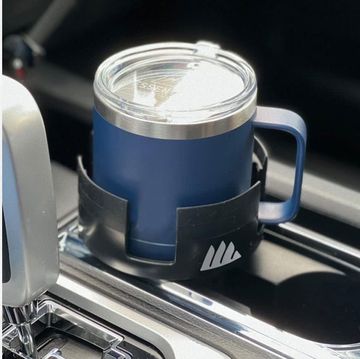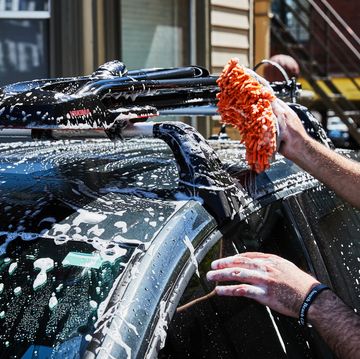If you are the instructor, start by telling your student that [1] THE HANDS ON THE WHEEL SHOULD BE AT 3 O'CLOCK AND 9 O'CLOCK (not 2 and 10). This allows for maximum rotation with minimal exertion—meaning greater control. [2] RELAXED ARMS ALSO INCREASE CONTROL. "Why?" your pupil might ask. The answer is that relaxed muscles respond faster than tense ones. On the flip side, many factors decrease control; a chief one is distracted driving. [3] TELL YOUR STUDENT TO STAY FOCUSED, WHICH OFTEN TRANSLATES TO "PUT THE SMARTPHONE OUT OF REACH." Using one behind the wheel robs you of 37 percent of the brain power that could otherwise be applied to driving, according to a Carnegie Mellon University study.
Have you ever met a teenager who responds well to scolding? Okay, so when you're giving a lesson, [4] KEEP THE MOOD LIGHT. To do this [5] IGNORE SLIP-UPS AND PRAISE GOOD PRACTICES. ("Nice lane position. I like how you keep checking your mirrors.") Positive reinforcement makes good habits stick.
If that's too soft for you, consider this: [6] NOTHING TEACHES A DRIVER HOW TO DEAL WITH A CRISIS LIKE PARKING-LOT DONUTS. Instructor Bill Wade of Tire Rack Street Survival suggests having a student driver push a car to extremes on a deserted asphalt expanse. For example, [7] WITH THE CAR UP TO SPEED, GIVE THE ORDER TO TURN ABRUPTLY AND KEEP ACCELERATING; sharp cornering and even skidding in a controlled environment beats doing those things in an emergency. If the car skids (that is, oversteers), the car's weight shifts forward and the rear end fishtails. [8] DURING OVERSTEER, TELL YOUR PUPIL TO TAP THE BRAKES AND SLOWLY TURN THE AWAY FROM THE DIRECTION OF THE SKID in order to regain control. Now [9] HAVE YOUR STUDENT GET THE CAR ROLLING AT 30 MPH OR SO, AND MASH THE BRAKE PEDAL TO THE FLOORBOARD. Your pupil will learn the odd, pulsing feeling of the antilock braking system—and to keep applying pressure in spite of it. Wade says to [10] GIVE VACANT-LOT LESSONS IN ALL WEATHER CONDITIONS SO THE DRIVER CAN FIND OUT HOW THE CAR BEHAVES ON WET, ICY, OR SNOWY PAVEMENT. The last can also help teach parallel parking: [11] SET UP TWO CONES IN THE LOT ABOUT 20 FEET APART, AND AFTER YOUR STUDENT GUIDES THE CAR INTO PLACE, HAVE HIM OR HER GET OUT AND LOOK AT THE TRACKS IN THE SNOW—visual evidence of a job well done.
When your student graduates to the road, [12] INSTRUCT HIM OR HER TO SCAN FOR "EXIT POINTS"; VEERING INTO A GRASSY MEDIA IS PREFERABLE TO A COLLISION. This sounds obvious, but there's an exception: [13] IF AN ANIMAL RUNS INTO THE CAR'S PATH, A DRIVER IS MORE LIKELY TO AVOID PERSONAL INJURY BY HITTING THE CRITTER THAN BY JERKING THE WHEEL TO AVOID IT. This rule is void if the animal is a moose.
Encourage your student to [14] LEARN TO DRIVE STICK. It enhances the feeling of human and machine working in harmony and increases confidence. Finally, [15] CONSIDER PRO LESSONS. At the Skip Barber Racing School, for instance, young drivers go from the classroom to the test track to learn such things as accident avoidance at high speeds. Arrive alive!














